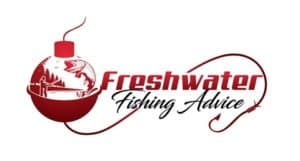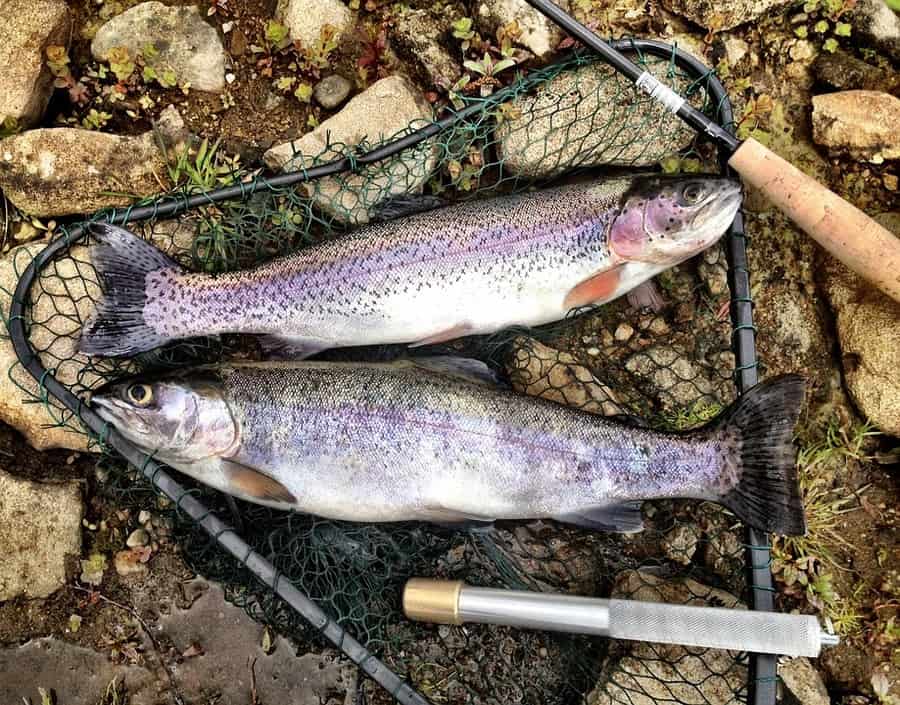


Water temperature is the most crucial thing to consider when setting off to fish for rainbow trout, and it can decide how you should approach your angling to net the most fish.
For rainbow trout fishing, water temperatures between 50°F and 60°F generally offer good fishing conditions, with the optimal range being around 55°F. This is when rainbow trout are actively feeding and more responsive to baits.
| Water Temperature (°F) | Quality of Rainbow Trout Fishing |
| Below 40° | Slow activity, reduced feeding, sluggish movement. |
| 41-50° | Gradually more active, feeding increases, moderate movement. |
| 51-60° | Active feeding, more movement, willingness to chase lures. |
| 61-68° | Peak activity, aggressive feeding, actively chasing lures. |
| 69-73° | Sustained activity, feeding consistently, exploring shallower areas. |
| Above 74° | Activity decreases, seek cooler, deeper waters, feeding slows down. |
While even seasoned fishermen might tell you that rainbow trout will bite at any temperature (which isn’t entirely wrong), there are certain things to consider in how differences in temperature and sudden shifts can change rainbow trout feeding habits.
This article will cover the ideal temperatures for rainbow trout fishing, emphasizing typical trout behavior at given temperature ranges, what baits and lures to use for different conditions, and how trout react to storms and sudden changes in water temperature.

Cold Water (Below 40°F / Below 4.5°C):
Chilly Water (41-50°F / 5-10°C):
Cool Water (51-60°F / 10.5-15.5°C):
Mild Water (61-68°F / 16-20°C):
Moderate Water (69-73°F / 20.5-22.5°C):
Warm Water (Above 74°F / 23.5°C):
Rainbow trout are influenced by water temperature. When the water is cooler, around 50-60°F, rainbow trout tend to be more active and hungry. They swim closer to the surface and actively feed on insects, making dry flies and nymphs effective for catching them.
As the water warms above 60°F, rainbow trout may become less active and seek cooler, deeper areas. They might still feed but be more selective about their food.
Early Winter (Water Temperature: 30-40°F / -1-4.5°C):
Middle Winter (Water Temperature: 20-30°F / -6.5-1°C):
Late Winter (Water Temperature: 30-40°F / -1-4.5°C):
Remember, during winter, rainbow trout’s activity levels are lower, and they become more selective in their feeding.
Early Spring (Water Temperature: 45-55°F / 7-12.5°C):
Middle Spring (Water Temperature: 55-60°F / 12.5-15.5°C):
Late Spring (Water Temperature: 60-65°F / 15.5-18.3°C):
Early Summer (Water Temperature: 60-70°F / 15.5-21°C):
Middle Summer (Water Temperature: 70-75°F / 21-24°C):
Late Summer (Water Temperature: 75-80°F / 24-27°C):
Early Fall (Water Temperature: 60-70°F / 15.5-21°C):
Middle Fall (Water Temperature: 50-60°F / 10-15.5°C):
Late Fall (Water Temperature: 40-50°F / 4.5-10°C):
The best water temperature range for nymph fishing for rainbow trout can vary based on the season:
The best water temperature range for streamer fishing for rainbow trout can vary depending on the season:
The best water temperature range for dry fly fishing for rainbow trout can vary throughout the seasons:

Air temperature plays a significant role in rainbow trout fishing. Here’s how it impacts them:
It’s important to consider the air temperature when planning your fishing trip and adapt your tactics based on how the rainbow trout respond to the changing conditions.
In the colder months of winter, when water temperatures drop below 40°F, rainbow trout can become less active and slow down their feeding. Extremely cold water, around 32°F or freezing, can cause ice to form on the surface, making fishing challenging and unsafe.
When it comes to air temperature, if it gets too cold, such as below freezing, it can lead to freezing water and ice formation, making fishing nearly impossible. Additionally, very cold air temperatures can affect your fishing comfort and safety.
Generally, for good rainbow trout fishing, you’ll want to aim for water temperatures above 40°F in the winter. Similarly, air temperatures above freezing are more comfortable and safer for fishing.
During spring, when the water temperature is around 45-55°F, rainbow trout are most active and readily feed. As summer arrives and water temperatures rise to 60-70°F, trout may become less active, seeking cooler, deeper waters to avoid stress.
When fall arrives and the water cools to around 50-60°F, rainbow trout become more active again, preparing for winter. In colder months, water temperatures below 40°F can slow down trout metabolism, making them less likely to bite.
When it comes to heat, if the air temperature gets too hot, such as over 80°F, it can warm the water and stress rainbow trout, causing them to become sluggish and seek deeper, cooler areas. Similarly, if the water temperature goes above 70-75°F, it can stress the fish, and they might stop feeding altogether to conserve energy.
Impact of Storms and Weather on Rainbow Trout Fishing:
Click here to see the best water temperature for trout. Click here to see how to catch trout on cloudy days. Click here to see how to catch trout on sunny days. Click here to see how to catch trout on windy days. Click here to see the best water temperature for brown trout.

